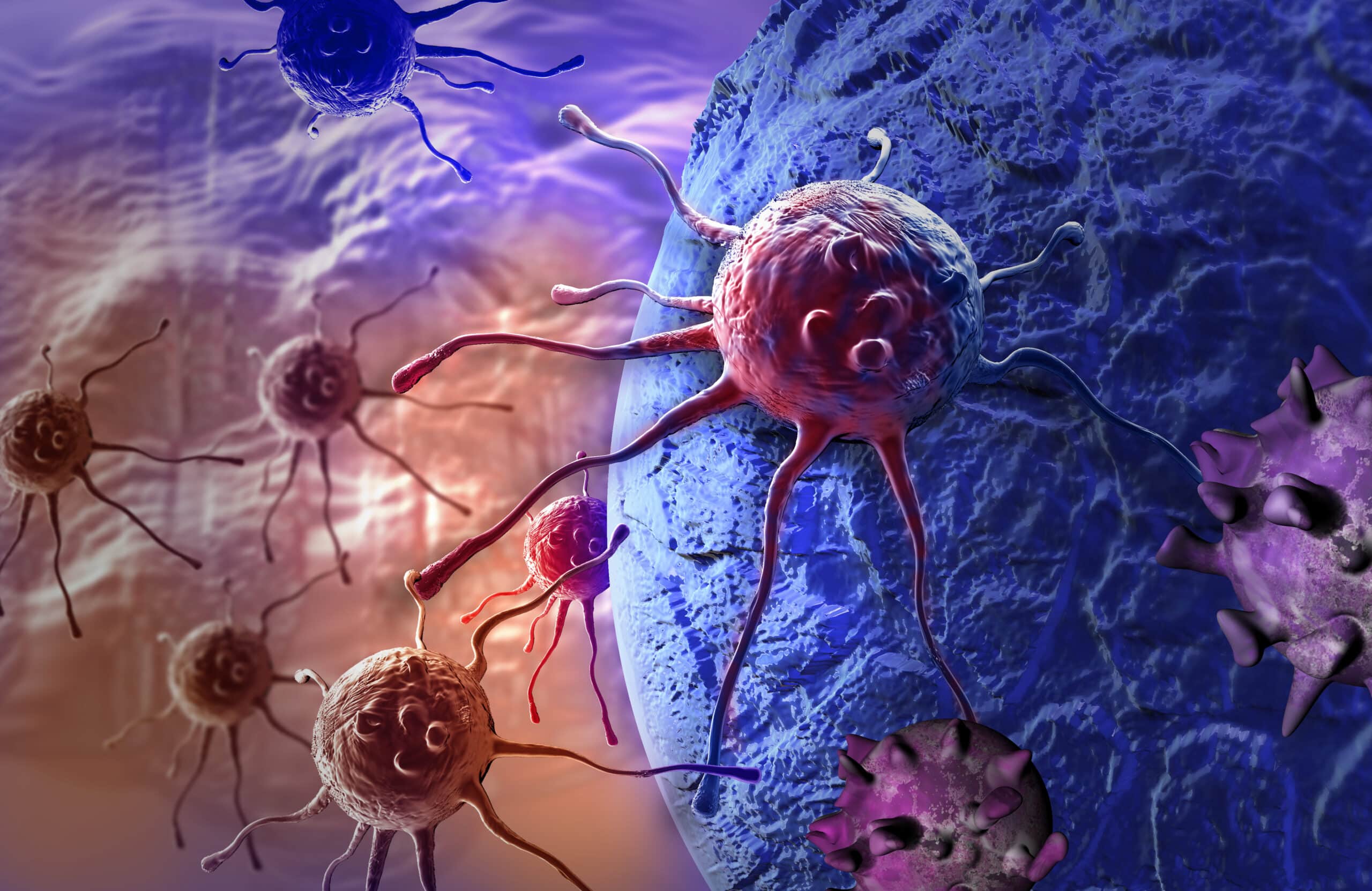Now, Howard Hughes Medical Institute Investigator Stephen Elledge’s team has uncovered a surprising new action for many of these defective genes. More than 100 mutated tumor suppressor genes can prevent the immune system from spotting and destroying malignant cells in mice, Elledge, a geneticist at Brigham and Women’s Hospital, reports September 16, 2021, in the journal Science. “The shock was that these genes are all about getting around the immune system, as opposed to simply saying ‘grow, grow, grow!'” he says.
Conventional wisdom had suggested that, for the vast major of tumor suppressor genes, mutations allow cells to run amok, growing and dividing uncontrollably. But that explanation had some gaps. For example, mutated versions of many of these genes don’t actually cause rampant growth when put into cells in a petri dish. And scientists couldn’t explain why the immune system, which is normally highly proficient at attacking abnormal cells, doesn’t do more to nip new tumors in the bud.
Elledge’s newpaper offers some answers. His team probed the effects of 7,500 genes, including genes known to be involved in human cancer. A third or more of those cancer-linked genes, when mutated, trigger mechanisms that prevent the immune system from rooting out tumors, often in a tissue-specific manner.
“These results reveal a fascinating and unexpected relationship between tumor suppressor genes and the immune system,” says HHMI Investigator Bert Vogelstein, a cancer geneticist at the Johns Hopkins University who was not involved in the research.
Wiping out melanoma
The idea that tumors can evade the body’s defenses is not new, of course. In one major advance in cancer treatment over the last few decades, scientists figured out that some tumors churn out proteins that switch off immune cells known to attack cancerous cells.
Pharmaceutical companies developed drugs, dubbed checkpoint inhibitors, that block those proteins and hyper-activate the immune system. The first checkpoint inhibitor, based on Nobel Prize-winning work by HHMI Alumnus James Allison at the University of California, Berkeley, was approved in 2011. Since then, the drugs have racked up some spectacular successes. In a high-profile case in 2015, a checkpoint inhibitor unleashed former President Jimmy Carter’s immune system, letting it wipe out the melanoma that had spread to his brain.
Checkpoint inhibitors are now big sellers. But they aren’t the overwhelming and universal therapy that some scientists had hoped for. In addition to having serious side effects, the drugs work only in a minority of patients and cancer types. Elledge’s work helps explains why: in short, tumors have far more genetic tricks for fighting off the immune system than anyone had previously thought.
CRISPR engineering
Elledge had a hunch that defective tumor suppressor genes were doing something more than ramping up cell growth. Starting with a list of 7,500 genes, his team used CRISPR to engineer thousands of tumor cells. Each lacked a functioning version of one of those genes. The researchers put the cells into two types of mice: those with an immune system, and those without. Then, the team studied the tumors that grew.
Genetic analyses revealed which mutated genes were abundant in the tumors — and likely playing a role in tumor formation. In mice with immune systems, defective tumor suppressor genes showed up frequently. This shows that those genes – about 30 percent of all tumor suppressor genes tested — work by enabling tumors to evade the immune system, Elledge says.
Elledge’s method revealed the many different genes that tumors can mutate to escape the body’s defenses. To explore possible mechanisms triggered by the mutations, the researchers zeroed in on a gene called GNA13. Mutating the gene protects cancer cells from the immune system’s T-cells, creating a safe space for the tumor to thrive, the team found.
Their research paints a sobering picture of a quick and fierce evolutionary arms race between cancer cells and the immune system, Elledge says, with tumors having hundreds of potential ways to foil the body’s attack. But he suspects that many of these mutated genes act via similar strategies, a possibility his team can now examine in detail. If this proves to be the case, an intervention to block one evasion technique could potentially thwart others as well.
Overall, Elledge hopes his findings open new doors to treating cancer — by making it possible to uncover and stymie tumors’ new and different tricks. “There are a lot of genes that people can now study,” he says.




